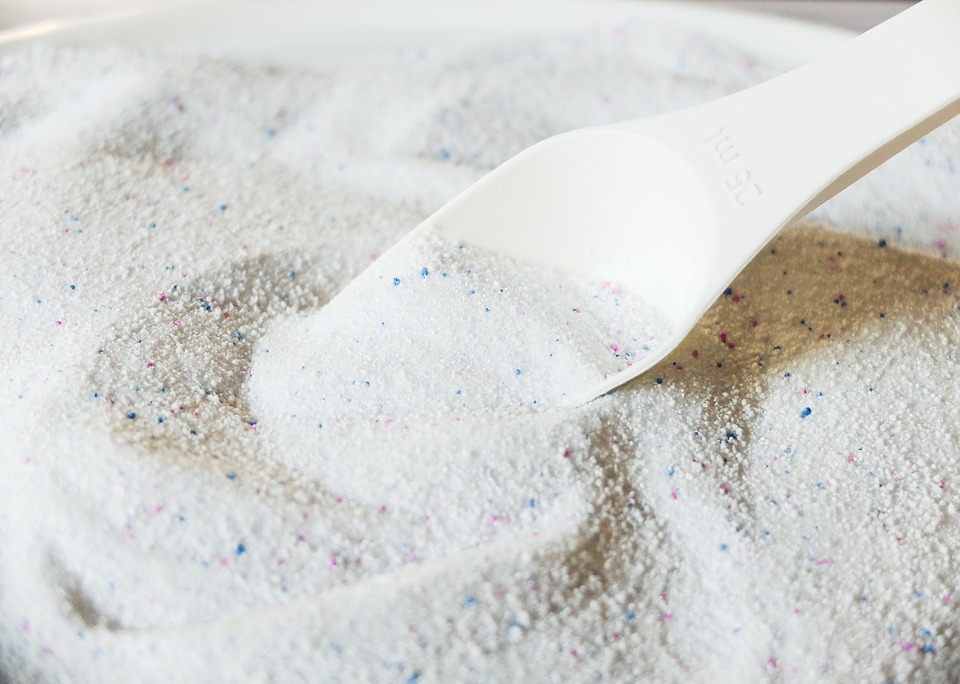Fragrances and Other Chemicals In Common Household Products. Are They Safe?
I made a recent Facebook post about people eating laundry detergent pods that has been widely reported including the article cited below in the Wall Street Journal.
https://www.wsj.com/articles/p-g-grapples-with-how-to-stop-a-tide-pods-meme-1516449600
These laundry detergent chemicals are so strong, we’ve bought meat and fish that smelled like these chemicals just from being in the store with this 🤢.
I can’t imagine someone eating these things.
Obviously, it’s a bad idea.
On a bigger scale, the chemicals that people are absorbing through their skin and breathing in both all day and all night are causing them and their families harm.
It also can put others at risk, particularly those with breathing problems that may have a serious asthma attack for example because they walk by someone with asthma… maybe a small child that has an asthma attack and ends up hospitalized or possibly worse.
Asthma rates are rapidly increasing and so are asthma attacks – which can be fatal.
About 2 million ER visits a year are due to asthma.
About 1 in 12 people in the US have asthma. It’s split close to evenly between adults and kids.
We know that these chemicals can cause an asthma attack in men, women, and children. This is absolutely undisputable at this point.
Some people that have an asthma attack die.
The death rate for asthmatic children has increased by about 80% percent since 1980.
Could it be that rates are increasing because people are buying and using all these chemicals?
There is some evidence for this.
People believe that because they can buy something in the store that it is safe for themselves, their families, and others.
Clearly this is not true.
For example, what if you like scented detergents for yourself and your family or some other detergent?
The problem is that you probably have no idea you’re putting yourself and others at risk.
Some people are doing this in households with asthmatics.
Others might just be outside walking around and pass a small child with asthma that is very reactive to these chemicals. The child goes into an asthma attack.
As previously mentioned, some asthma attacks are fatal. Others result in very expensive hospitalization and the use of many medications that have serious side effects.
Study in the journal Environmental Health that tested 100 commonly fragranced household chemicals including detergents and dryer sheets…
From the article:
“The ultimate goal is to improve public health,” Steinemann says. For now, she recommends cleaning with basic supplies like vinegar and baking soda.
Steinemann’s study “strongly suggests that we need to find unscented alternatives for cleaning our homes, laundry, and ourselves,” says Claudia Miller, an allergist and immunologist at the University of Texas Health Science Center at San Antonio.
An expert in chemical sensitivity, or toxicant-induced loss of tolerance, Miller created the Quick Environmental Exposure and Sensitivity Inventory,9 a screening tool for chemical intolerance.
According to Miller, products intended to keep homes smelling fresh can set people up for a lifetime of chemically induced illness, and repeated exposure to small amounts of household chemicals can trigger symptoms to previously tolerated chemicals.10 “The best smell is no smell,” Miller says.
https://www.ncbi.nlm.nih.gov/pmc/articles/PMC3018511/
A study published in the same journal a year later… that brings up the endocrine disruption from these common chemicals in addition to asthma risks.
Let’s say that it is a chemical that acts like estrogen in the body.
Maybe this increases risk of breast and prostate cancer, maybe it only makes you gain body fat, maybe it tells a man’s body that they have too much testosterone production so it reduces testosterone production (estrogen is the signal the man’s body uses to measure testosterone as it is a breakdown product of testosterone meaning high estrogen levels causes your brain to cause less testosterone production).
Taken from the article:
“Laboratory and human studies raise concerns about endocrine disruption and asthma resulting from exposure to chemicals in consumer products.”
Conclusions: Common products contain complex mixtures of EDCs and asthma-related compounds.
More from the article:
Toxicological studies of these mixtures are needed to understand their biological activity. Regarding epidemiology, our findings raise concern about potential confounding from co-occurring chemicals and misclassification due to variability in product composition.
Consumers should be able to avoid some target chemicals—synthetic fragrances, BPA, and regulated active ingredients—using purchasing criteria.
More complete product labeling would enable consumers to avoid the rest of the target chemicals.
https://www.ncbi.nlm.nih.gov/pmc/articles/PMC3404651/
Another article that brings up severe contact sensitivity in many of these chemicals. It recommends that governments ban 26 known highly problematic (and common) chemical allergens.
From the article:
“Some fragrance compounds are severe contact allergens.
This declaration is meant to inform the consumer of potential risks of skin sensitizers in the products.”
https://www.ncbi.nlm.nih.gov/pubmed/20451450
This interesting paper in the Journal Integrated Environmental Assessment and Management titled, “The hazard communication of fragrance allergens must be improved.”
It states, “Contact allergy is a global health problem that could be alleviated considerably if the general public could reduce contact to sensitizers.”
Again talking about contact allergy with these chemicals.
There are so many more published studies that demonstrate a real reason for concern.
Most people have no idea.
Most people also have no idea that using these products, in this example laundry detergents puts others at serious risk and can even be fatal.

 Protected by Patchstack
Protected by Patchstack
Leave a Reply